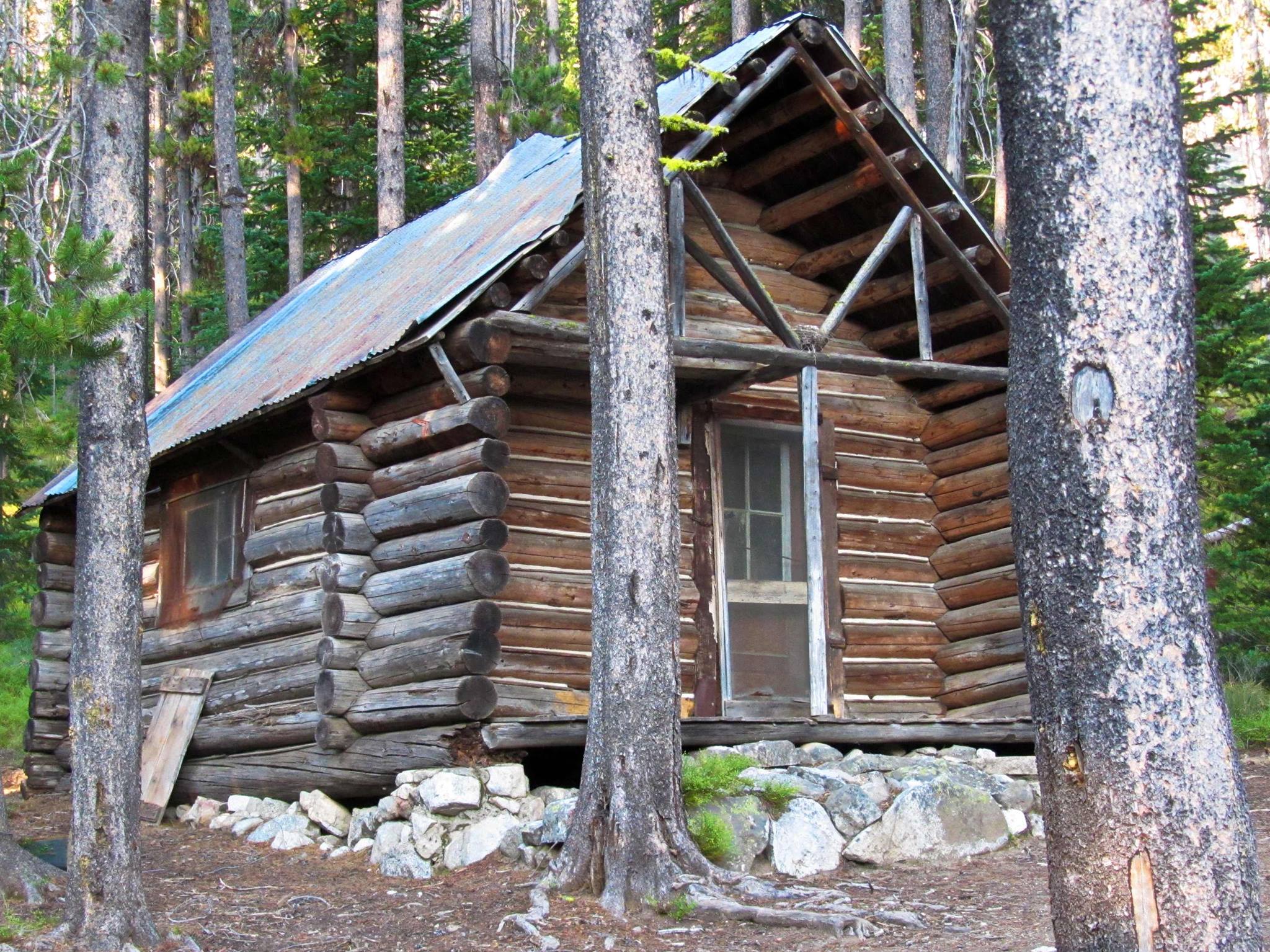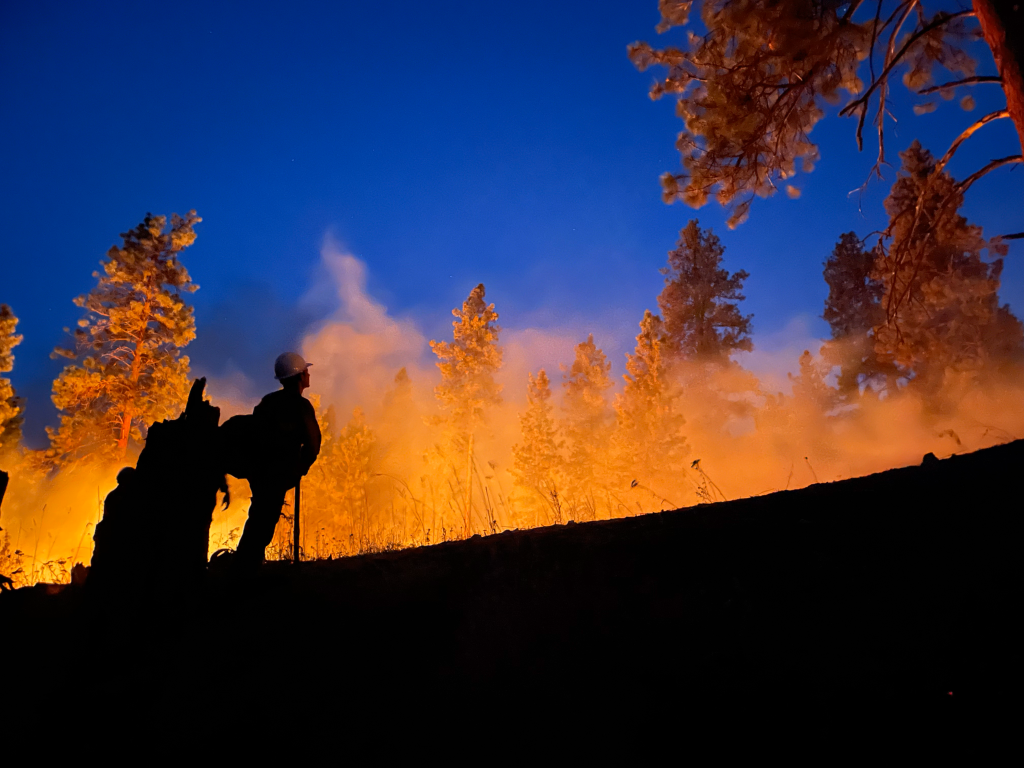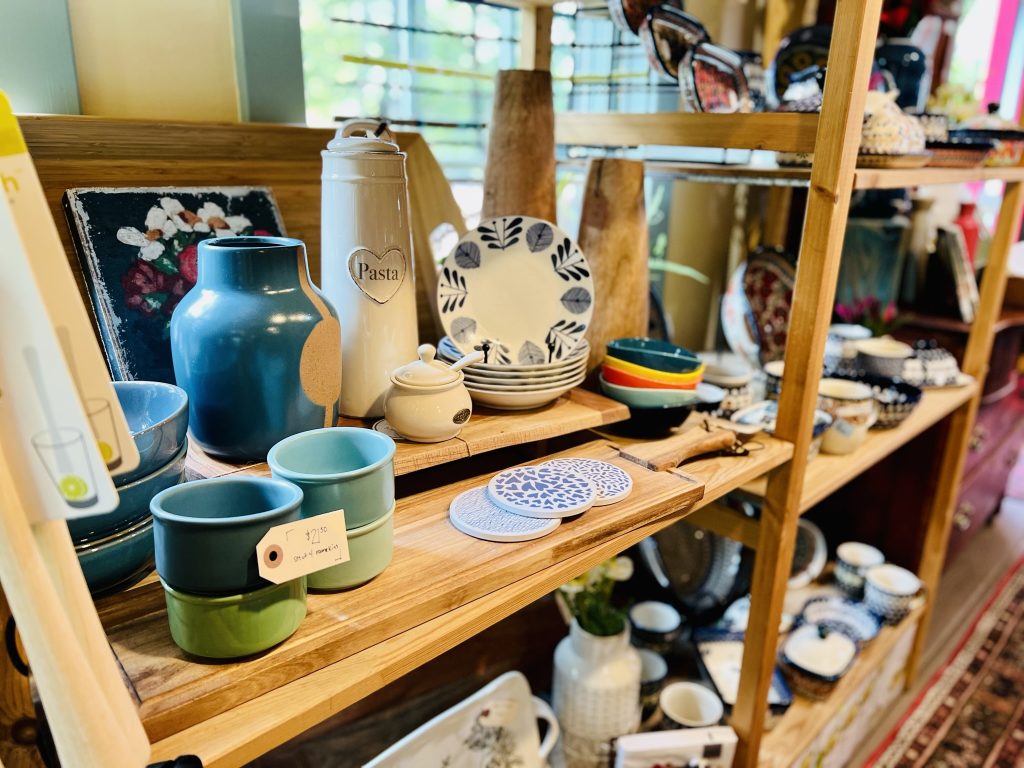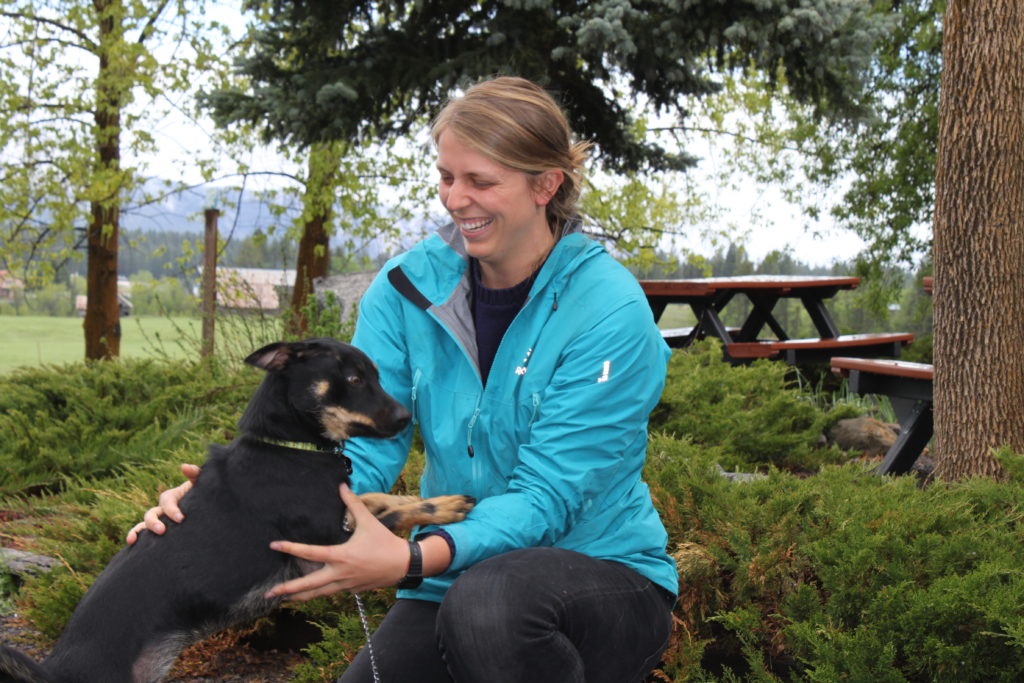More Than Just a Cabin in the Woods
Wallace Stegner wrote in The Sound of Mountain Water, “One cannot be pessimistic about the West. This is the native home of hope. When it fully learns that cooperation, not rugged individualism, is the quality that most characterizes and preserves it, then it will have achieved itself and outlived its origins. Then it has a chance to create a society to match its scenery.”
That hope, and the cooperation it inspires, can be seen all around us, but perhaps never more so than in a small cabin located 22 miles north of McCall at the end of a dirt road in the Payette National Forest.

The “Trapper Cabin” was built in 1936 and is one of only two cabins left in Idaho that were built by the U.S. Fish and Wildlife Service (USFWS). The USFWS was created by the Department of Interior in the 1870s to study the decline of fisheries in the United States at that time. At that time of its construction, the Trapper Cabin was used as an outpost to control the predator populations as agricultural industries grew in the area.
Constructed in the traditional Rocky Mountain log cabin style, using lodge pole pine logs and mud chinking, the Trapper Cabin is the only cabin remaining in the Payette National Forest built using this historic method. While a second cabin was originally built at Blackwell Lake, it sadly burned in the Blackwell Fire in 1994. The remaining cabin had been eligible to be listed on the National Register of Historic Places, however a vandalism incident in September of 2015 derailed that opportunity and set this historic place on a new path.



On a fall day in 2015, a group of people shattered the Trapper Cabin’s serene setting, breaking the windows and using cables attached to an ATV to pull logs from the base of the cabin. The torque from this action caused the cabin to partially collapse. After reports of the vandalism reached the Payette National Forest, which was actively fighting the large TeePee Springs fire nearby at the time, Morgan Zedalis, PNF Heritage Program Manager and resident archeologist/anthropologist, was able to drive out an assess the damage a few days later. What she found was disheartening.
Zedalis grew up recreating and visiting the woods where the Trapper Cabin sits, so this historic place has personal significance for her. These fond memories, family traditions, and love of the great outdoors along with her position at the Forest Service, sparked a personal pursuit of justice for the Trapper Cabin.
After seeing the damage, Zedalis spoke with her Local Enforcement Officer and learned the situation was bleak with no real opportunity for recourse or straightforward way to find who was responsible and seek compensation for the damage. However, thanks to the urging of family members, Zedalis and the Payette National Forest took to social media to seek out any leads as to who may have done the damage. Less than 24 hours, 38 comments and 79 shares later, they had a lead. An individual came forward after seeing cell phone video footage of the incident.

This spurred a major effort by Zedalis to restore the cabin and preserve its historic significance. Before getting started, however, she had to actually determine who owned the Trapper Cabin. At that time, the Payette National Forest did not own the cabin and there was no clear paper trail to help determine who the owner of record was. After some digging, it was discovered that it was still owned by the USFWS, and since the building was a liability and hazard, the USFWS earnestly sold it to the Payette National Forest for a nominal amount. With ownership secured, the Forest Service could move forward with the restoration.
But restoration was a difficult task, at best. To improve the odds of success and buy some time to plan and brainstorm solutions, Zedalis was able to stabilize the structure before winter set in. This task complete, she then contacted retired Forest Service employee Ed Allen who had previous experience restoring cabins in Idaho’s backcountry. From there, Allen recruited two additional former Forest Service employees and friends, Larry Swan and Dave LeClair. Swan and Allen met in 1968 during their rookie year of smokejumping in McCall while LeClair was a hot shot firefighter who ultimately retired as the forest carpenter. All three men shared great connection to the Payette National Forest and stewardship.
When the three first started to evaluate the scope of the project, they knew the task would be difficult…a perfect “Ed-Venture.” “Ed has the know-how to view this situation as a challenging opportunity,” said Swan. “I looked at it and thought there is no way we could save it. When you go into a project with Ed we call them Ed-Ventures, and I just labeled this as another ed-venture. He is just remarkable at his ability to solve problems.” Swan says he got on board because the project was infectious. “I would have likely just passed over the project, but the vision is what motivated and galvanized the group,” Swan says.

With a plan in place and the winter behind them, restoration work commenced the following spring. The men got to work replacing the damaged and rotted logs, replacing the floors and windows, and rodent-proofing the structure to ensure its longevity. The goal was to re-build the cabin as close to its original state as possible to retain its signature character. Although experienced, Allen had not spearheaded a project of this magnitude that involved recreating a cabin with full structural rehabilitation, but the team was able to make it happen.
Zedalis attributes the success of what may have otherwise been a complicated red tape process to her Ranger, the Local Enforcement Officers, the public, and plain luck for everything coming together as serendipitously as it did. The builders, Allen, Swan and LeClair, give the credit to Zedalis and her tenacity to make the restoration possible against all odds. The willingness of everyone involved to give credit to someone else is a shining example of the altruism of this community and the humble cast of characters that quietly live here. “This project was a risk that was taken on by many individuals and departments; a rare situation all-around and a complete leap of faith on everyone’s part,” says Zedalis.
“I was overwhelmed by the love and support that we received,” says Zedalis. “Not only did social media help us find the perpetrators, but it also gave us the opportunity to hear the meaning and significance of this place to so many people.” In addition to stories from social media, during the restoration, countless recreationalists, hunters, and adventurers would stop in to see the progress of the project and would recount their own stories from the area, expressing their gratitude for saving the cabin.
The Trapper Cabin represents much more than just the structure. The cabin is a reminder that history is important to society and there is value in seeing and preserving what came before. Allen says he believes when people encounter something like the Trapper Cabin it heightens their awareness of their surroundings. “In my opinion, we don’t put enough value on those types of things,” Allen says. “Unless we have these tangible things to connect to, that element of respect will be missing. They are important to us, they remind us, they connect us, keep us hanging on to that era.”





